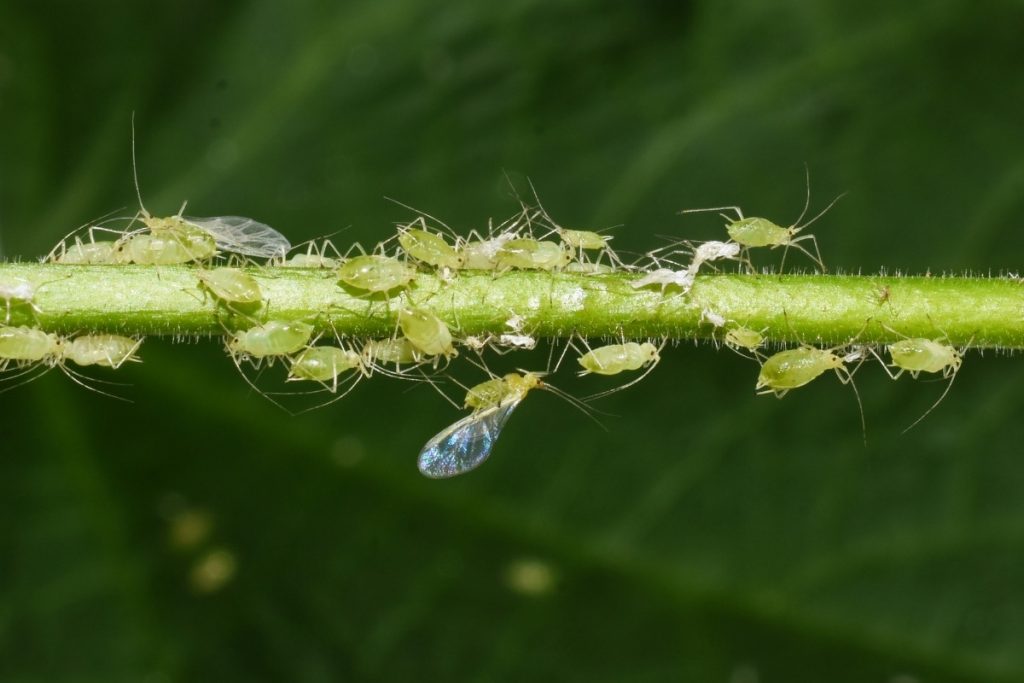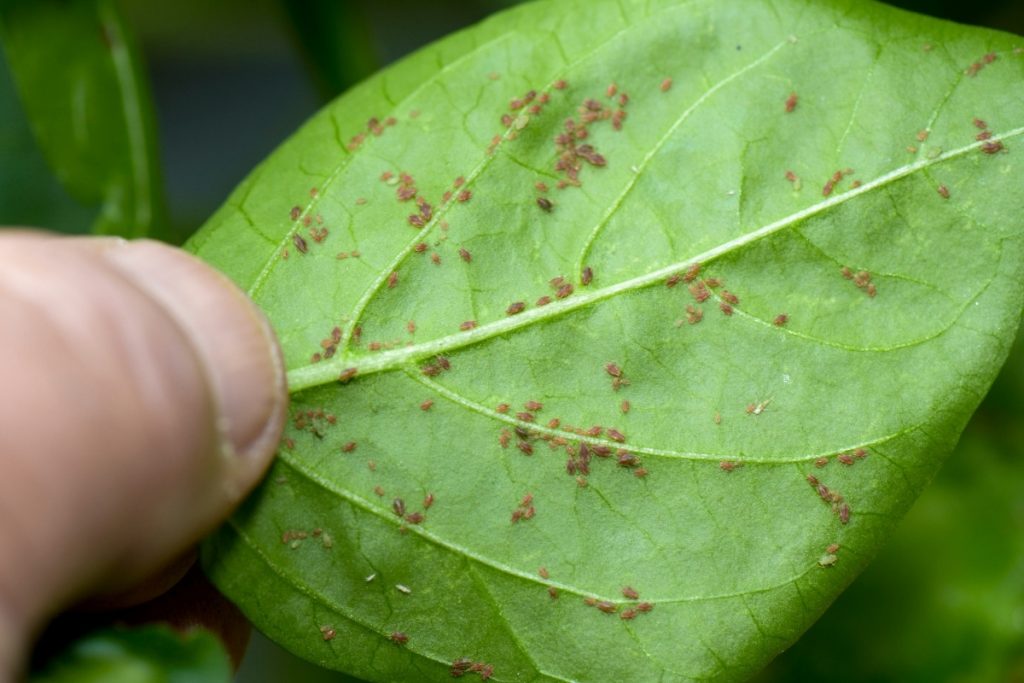Table of Contents
Aphids are tiny, sap-sucking insects that can be a huge problem for gardeners and homeowners alike. There are hundreds of different species of aphids, with several hundred that may be a problem for agriculture and gardening. Aphids can cause damage to plants by sucking sap from the leaves, leading to stunted growth or even death. If aphids are present on your houseplants, don’t worry – we’re here to help! In this blog post, we will discuss what aphids are, how to identify them, and most importantly, how to get rid of aphids safely and effectively.
What are aphids?

Aphids are tiny, sap-sucking insects that can be a huge problem for gardeners and homeowners alike. There are hundreds of different species of aphids, with several hundred that may be a problem for agriculture and gardening. Aphids can cause damage to plants by sucking sap from the leaves, leading to stunted growth or even death.
If aphids are present on your houseplants, don’t worry – we’re here to help! In this blog post, we will discuss what aphids are, how to identify them, and most importantly, how to get rid of aphids safely and effectively.
How to identify aphids
Aphids are small, soft-bodied insects that can range in color from green to black. They typically have two antennae, six legs, and a pair of wings (though some species may be wingless). Aphids vary in size but usually measure between one to ten millimeters in length.
Aphids are most commonly found on the underside of leaves, where they feed by sucking sap from plant tissues with their piercing-sucking mouthparts. Aphids may also be present on stems and flowers as well as aphid eggs that are typically laid into crevices or under leaf hairs (pubescence).
How to get rid of aphids safely and effectively
The best way to get rid of aphids is by using a safe and effective insecticide. Insecticides that are registered for aphid control can be found at most garden stores, or you can ask your local gardener for advice. Be sure to read the label carefully and follow all directions when using insecticides on aphids!
If you have aphids, don’t worry – we’re here to help! In this blog post, we will discuss what aphids are, how to identify them, and most importantly, how to get rid of aphids safely and effectively.
How do aphid sprays work?
Insecticides that are registered for aphid control can be found at most garden stores, or you can ask your local gardener for advice. Insecticides work by killing the aphids on contact. Some insecticides also work by preventing the aphids from reproducing, which will eventually lead to their death.
Be sure to read the label carefully and follow all directions when using aphid sprays on aphids!
Aphids are most commonly found on the underside of leaves, where they feed by sucking sap from plant tissues with their piercing-sucking mouthparts. Aphids may also be present on stems and flowers as well as aphid eggs that are typically laid into crevices or under leaf hairs (pubescence).
The best way to get rid of aphids is by using a safe and effective insecticide. Insecticides that are registered for aphid control can be found at most garden stores, or you can ask your local gardener for advice. Be sure to read the label carefully and follow all directions when using insecticides on aphids!
What You’ll Need
Equipment / Tools
- Small spray bottle
- Scissors or small pruning shears
- Sticky traps
Materials
Keep in mind that you won’t need all the following supplies; these reflect the variety of options you have to remove the infestation. You may need a small spray bottle, scissors or small pruning shears, and sticky traps.
If you’re looking for a more natural approach, you can also try using horticultural oil or insecticidal soap. Be sure to read the label carefully and follow all directions when using any type of aphid control product.
- Cotton swabs
- Insecticidal soap
- Dish detergent and water (optional)
- Neem oil
- Rubbing alcohol
- Homemade insect spray
Instructions
- There are a few different ways that you can get rid of aphids on your houseplants. One way is to wash them away with water. You can either use a spray bottle or a hose to spray the aphids directly off the plants. This is a quick and easy way to remove aphids, but it may not be effective if the aphid population is large.
- If you only have a few aphids on your houseplants, you can remove them by hand. Use your fingers to gently scrape them off the leaves, and then wipe them away with a cotton swab. This is a quick and easy way to remove aphids, but it may not be effective if the aphid population is large.
- There are a few different ways that you can get rid of aphids on your houseplants. One way is to wash them away with water. You can either use a spray bottle or a hose to spray the aphids directly off the plants. This is a quick and easy way to remove aphids, but it may not be effective if the aphid population is large.
- Another way to get rid of aphids is by using a safe and effective insecticide. Insecticides that are registered for aphid control can be found at most garden stores, or you can ask your local gardener for advice. Be sure to read the label carefully and follow all directions when using insecticides on aphids!
- If you’re looking for a more natural approach, you can also try using horticultural oil or insecticidal soap. Be sure to read the label carefully and follow all directions when using any type of aphid control product.
- Though this method is a little time-consuming, aphids will be killed if you coat them with a swab dipped in rubbing alcohol.
- Another way to get rid of aphids is by cutting away the infested areas of your plants. This is a more time-consuming approach, but it can be very effective in getting rid of aphids. Use your scissors or pruning shears to cut away the infested leaves, stems, and flowers. Be sure to dispose of the cuttings in a sealed bag or container so that the aphids can’t escape.
- Sticky traps can be an effective way to get rid of aphids on your houseplants. Place the traps near the plants that are infested with aphids, and the aphids will stick to the traps when they try to move around. Be sure to replace the traps as needed, and continue to use them until all of the aphids are gone.
- If you’re looking for a more chemical approach, you can try using insecticides that are registered for aphid control. These products can be found at most garden stores, and they can be very effective in getting rid of aphids. Be sure to read the label carefully and follow all directions when using insecticides on aphids!


